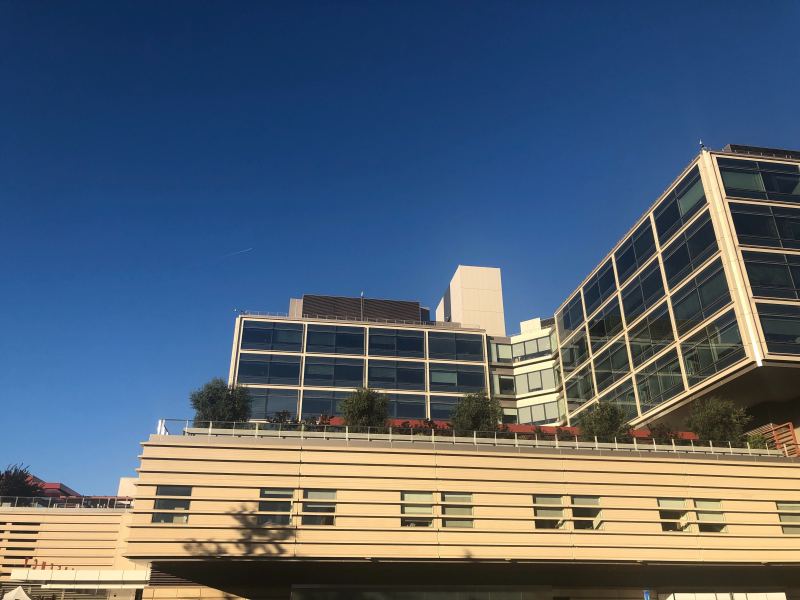As America faces a shortage of contact tracers, Stanford students and faculty have recruited volunteers and performed research to explore the ethical implications of identifying people who may have come into contact with an infected person.
In Santa Clara County, the Stanford class MED 164: “COVID-19 Case Investigation and Contact Tracing” has mobilized a group of undergraduate and medical students to contact trace the transmission of COVID-19 manually. Students undergo interviewing and health-coaching training before collaborating with the Santa Clara County Public Health Department to conduct official interviews.
Contact tracers notify people about their potential exposure to COVID-19; offer information and support regarding testing, self-isolation and health services; and work with patients to identify people with whom they have recently been in close contact.
Though tracing is an effective method of curbing COVID-19 transmission rates, some have raised concerns it might compromise patient privacy.
Lars Osterberg, associate professor of medicine and one of the MED 164 instructors, said that one of the key components of contact tracing is to build trust, especially now that “it’s even harder when you’re meeting someone through Zoom or through a telephone.”
MED 164 contact tracer Anudeep Golla ’24 was initially concerned about people’s reactions to a phone call about their personal health. However, he said that he has been able to communicate openly with subjects by first establishing that the call is voluntary and meant to keep people safe.
“My mentality is to help as many people as possible,” Golla said.
Golla says he builds personal connections as he follows up with contacts and people who have potentially been exposed. However, he said the work can be time-consuming, as each interview takes one to two hours. After Santa Clara County reported 358 new cases, Golla worked with five to six people each day last weekend.
Turning to digital contact tracing
The labor-intensive nature of manual contact tracing is exacerbated by shortages of human contact tracers and the limitations of people’s memories. One way some countries have mitigated these issues is by turning to technology, according to associate professor of pediatrics and medicine Jason Wang and professor of law and medicine Michelle Mello.
Digital epidemiology and contact tracing include “using cellphone signals and social media data to map the spread of the virus” and “implementing public health measures such as isolation and quarantine,” according to a research paper co-written by Wang and Mello.
In the U.S., state public health departments and technology companies have developed COVID-19 exposure notification tools such as apps that alert people who may have contacted infected civilians through their phones’ bluetooth, according to Wang.
By utilizing digital and manual contact tracing, human resources can be redirected to populations disproportionately affected by COVID-19 who might have limited technology access, Mello said in an interview with the Stanford Institute for Human-Centered Artificial Intelligence (HAI). But this response has its own set of challenges.
“From a public health standpoint, [the app] makes a lot of sense, but then for the individual freedom, it takes that away because you can track where people are,” Osterberg said in an interview with The Daily. “But I think if you want to protect the population, you sort of have to abide by public health principles protecting everybody.”
Establishing trust
Mello expressed concern that the implementation of the contact-tracing app “needs to be nationally led, and it’s not going to be,” in the HAI interview.
“So far, a lot of the efforts are done by individual states, which is okay during normal times… but during this extraordinary time… you need to use the capacity of not only the state government, but also the federal government,” Wang told The Daily.
In order to do so, people have to establish a level of trust with the government that does not currently exist, according to Wang.
“On the right, people don’t want to be tracked and some people don’t want to wear masks,” Wang said. “And on the left, there’s Black Lives Matter and immigration issues that are preventing people from really trusting the government. So, all these things are mixed together in a rapidly spreading pandemic.”
On top of the setbacks faced by both manual and digital contact tracing, the process involves more steps than just notifying people who might have been exposed to the virus, Wang said.
“You need to take care of people once they are informed that they have been exposed,” he said. “You need to get them to be tested, you need to support them if they need to quarantine… There’s no magic bullet.”
Osterberg pointed to this type of patient support as one of the strengths of manual contact tracing. Communicating with a real person allows those who have been exposed to COVID-19 to receive personalized information, such as advice on how to wear a mask and distance themselves from their friends and family, he said.
“You can’t get empathy from an app, you can’t get resources from an app, really, you can’t personalize that,” Osterberg said.
Contact Athena Xue at axue8 ‘at’ stanford.edu and Jodie Meng at jomeng ‘at’ stanford.edu.
